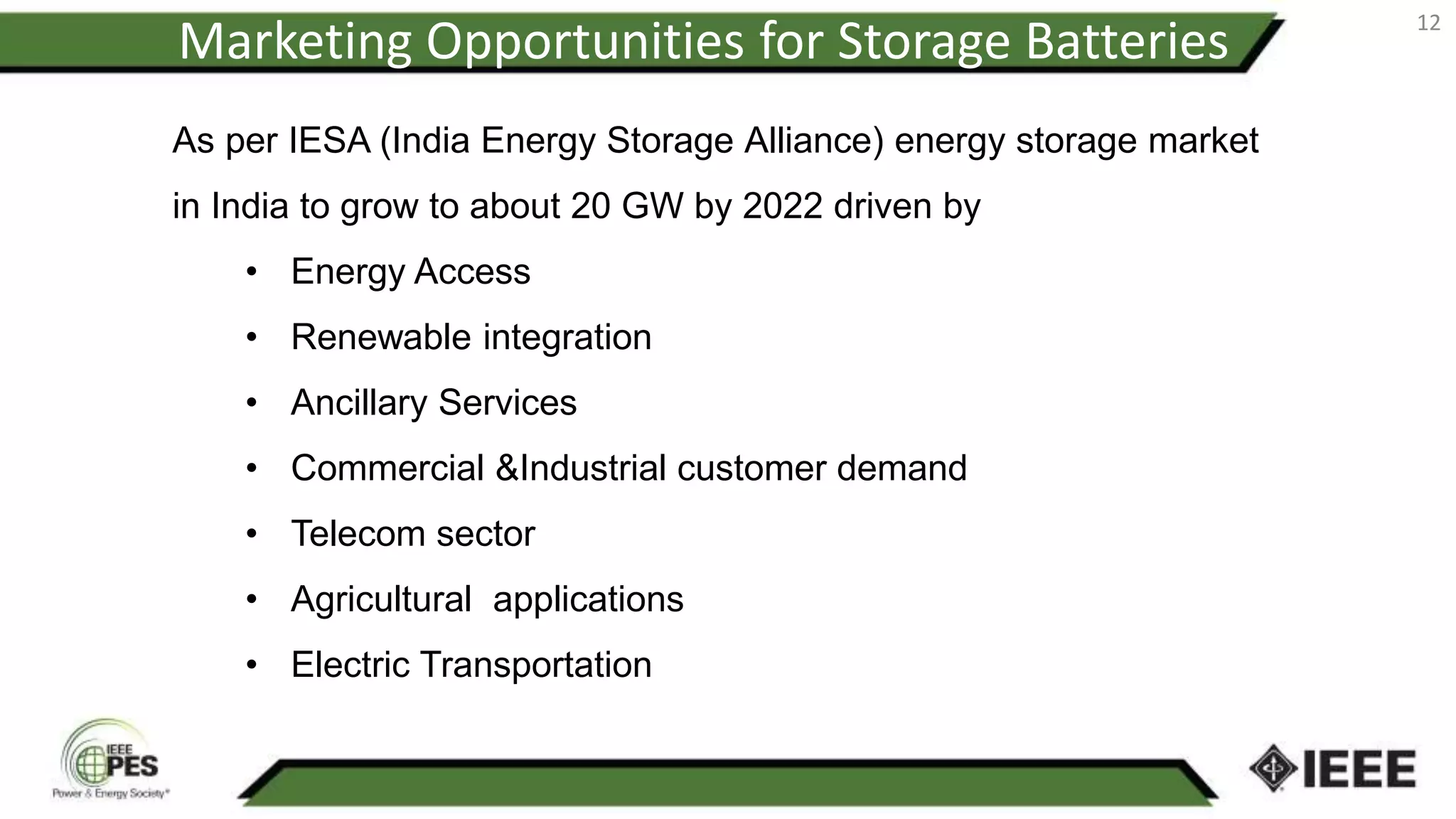The document discusses the challenges and strategies for integrating renewable energy into India's electricity grid, highlighting the progress of renewable resources such as solar and wind power. It emphasizes the need for advanced infrastructure, energy storage solutions, and regulatory frameworks to support growth and maintain grid reliability. Additionally, projections for future renewable energy capacity and its expected contribution to overall electricity generation in India are provided.

















![Typical Hybrid Generation Trend 18
0
200
400
600
800
1000
1200
1400
1600
0:00 3:00 6:00 9:00 12:00 15:00 18:00 21:00 0:00
Power
in
kW
Hour of day [hr]
Avg. annual hourly power gen comparison (1.5 MW Wind +
0.75 MW Solar)
Wind only Solar only Hybrid](https://image.slidesharecdn.com/21pesgm2656-230827121749-9f1df215/75/21PESGM2656-pptx-18-2048.jpg)

































